![]()
![]()
Introduction
When John Calipari arrived as head coach of the University of Kentucky, people seemed to take notice. Alongside the hoopla seemed to come a resurrection of media criticism of the Kentucky program. Unfortunately, when the media decides to ratchet up their activity, they tend to also put on full display the many problems and bad habits they've acquired over the years. This includes neglecting to uphold basic journalism standards or practices, which have served the industry well for decades, yet seem to be discarded by today's reporters. This is a perfect storm, given that Kentucky fans (unlike most places) not only have the knowledge to know when reporters make mistakes, but they also have the passion and energy to make an issue out of it.
Numerous unwitting reporters from around the country have fallen into this trap where they write or say something inaccurate or ridiculous about UK, only to find their mailbox flooded with angry fans pointing out their mistake. Many of these writers, perhaps unaccustomed to being confronted with their mistakes in such a way, go on to blame UK fans for 'being crazy'. In actuality they really should be looking inwardly for the cause. Instead of blaming the messenger, perhaps they should even start to question what other topics they've been making mistakes with in the past.
The media plays an important and vital role in terms of investigating, scrutinizing and reporting on institutions and individuals around the world and in all facets of life. It is an important service which helps to ensure that society as a whole is working as it should, and helps to root out corruption and wrong-doing.
However, one area the modern media tends to overlook is effectively policing themselves. This is an important responsibility since if the media can't be trusted to police themselves, then who is supposed to ? (most will agree that surely not the government or other political or industry interests) In the past the media would attempt to accomplish this by adhering to agreed-upon practices and codes of ethics, however this seems to have fallen out of fashion as media companies appear to be more interested in generating controversy and flash, rather than relying on accuracy and substance.
Unfortunately, very few reporters are willing to hold their own colleagues accountable for abiding by recognized standards and practices. This is especially true within the sports media, where it appears standards are lower, and it's not uncommon to see journalists band together to protect a colleague who has clearly crossed the line, rather than admonish or criticize them in public. Unfortunately, this attitude of protection (if left unchecked) encourages poor behavior and does nothing to uphold standards.
In the spirit of holding the media accountable in times when they themselves refuse to do so, below are four examples of poor journalism which occurred during 2010 with respect to Kentucky. In each case, specific criticisms are made and excerpts from the New York Times Handbook of Ethical Journalism are provided to illustrate tenants that have willfully been ignored by the media.
One can only hope that going forward, these types of mistakes will not be repeated.
| Boston Globe - DeMarcus Cousins | New York Times - Eric Bledsoe | Chicago Sun-Times - Anthony Davis | New York Times - Enes Kanter |
![]()
Boston Globe - DeMarcus Cousins
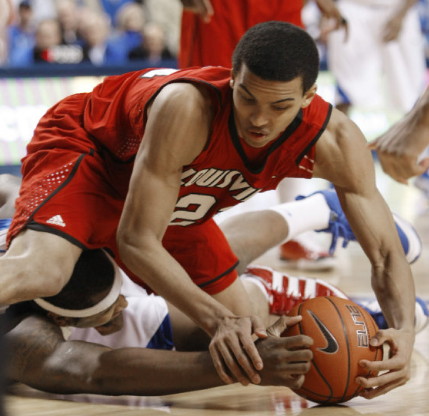 |
It's one thing to fail to give a balanced story, but where Washburn made a fundamental error was when he wrote: "Cousins has displayed a surly court demeanor, even punching a Louisville player in a scramble."
The problem with Washburn's statement is that the claim of a punch was false. Washburn was referring to a game earlier in the 2009-10 season between Kentucky and Louisville. In the game, Cousins and Louisville's Jared Swopshire got into a scrum on the floor fighting for a loose ball. The replay clearly shows that Swopshire kneed Cousins in the head and soon after Cousins turned his arms violently toward Swopshire's head. The game officials reviewed the film and assessed Cousins and Swopshire each a technical foul, along with Louisville guard Reginald Delk who came in and pushed Cousins after Cousins returned to his feet.
Exactly what physical contact Cousins' arms actually made with Swopshire is difficult to discern from the video replays. Contact obviously was present as Cousins was on top of Swopshire as the two were wrestling for the ball. But in terms of any overt blow by Cousins against Swopshire, the video replays from multiple angles simply don't clearly show such a hit occurring. If a physical blow was delivered by Cousins, it would have been from his forearm as Cousins turned his body and his forearm went toward Swopshire's head.
In other words, Cousins did turn his body toward Swopshire during the scrum and very likely hit Swopshire's head with his forearm. But even granting that such contact occurred, it doesn't come close to falling under Washburn's claim that a 'punch' was thrown.
After reading this mistake, I felt it worthwhile to point out the error to Washburn. Regrettably Washburn didn't have the professional courtesy to even reply, much less to correct his mistake.
Washburn's lack of response left me with no choice but to contact his editor to request the error be corrected. I wish I could say I was surprised by this turn of events but it's become more and more common for newspaper writers to hide behind their editors, rather than to admit to and correct their mistakes by their own volition.
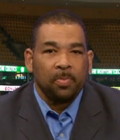 |  | 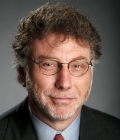 | |
| How many news professionals does it take to correct a simple mistake? At least in the case of the Boston Globe newsroom, it's a trick question because apparently no one is willing to perform such a duty. This arrogance and journalistic incompetence permeates throughout the entire organization. | |||
As it turned out the response from the Globe editor was less than satisfying. Joe Sullivan did respond to my complaint but claimed that no correction was necessary, while at the same time never addressing Washburn's error. Instead Sullivan seemed to suggest that because NBA scouts had reservations about Cousins, that whatever inaccuracies or mistakes made by the newspaper was OK. He finished his response by saying that "Gary's story was highly informative and interesting."
Given Sullivan's obvious indifference and reluctance to actually address the issue at hand (a mistake which numerous other readers also pointed out in the comments section), I was left with no satisfactory alterative other than to continue up the chain of command.
I contacted managing editor of the Globe, Martin Baron. In my email to him, I mentioned the following: "Note that I'm not disputing that the play in question was rough (Cousins and Swopshire were on the ground fighting for a ball when Swopshire kneed Cousins in the head and Cousins turned his forearm toward Swopshire's head), nor that Cousins was innocent, shouldn't have received a technical, etc. nor that the issue of Cousins' maturity is not a question for NBA scouts. Those are all fair questions. What I do object to is the claim that a punch was thrown, which is entirely false. In other words, Mr. Washburn does not have to include a blatant lie to make his point. (A lie that no doubt other lazy journalists will pick up and repeat for years to come.)
Baron's response was comical. He replied "I reviewed the video. Looks like an elbow punch to me. A punch doesn't have to be with a fist."
While Baron may technically be correct, assuming one gets to redefine common words however broadly they see fit, it still fails the standard of accuracy in relaying what actually occurred to readers of the paper. Washburn might as well have written Swopshire 'punched' Cousins (with his foot), using Baron's logic and lexicon for common words. My response is as follows:
| Mr. Baron,
Nice try but your response is lacking. You can dance around this and concoct terms like 'elbow punch' if you want, but when it is claimed that someone 'punched' someone in writing in the newspaper, to the general public the term suggests that someone extended their arm and hit someone with their fist. [which is far from what actually happened, in fact your proposed claim of 'elbow punch' is also inaccurate, since his elbow wasn't even at question, but the forearm.] I've come to realize that trying to argue this point is now hopeless, since you apparently don't want to recognize that what was written was inaccurate and misleading and your newspaper has conveniently removed your ombudsman position years ago so there's little recourse for talking to anyone who potentially has some objectivity in the matter. To anyone who has respect for accuracy, this would have been corrected long ago, and with much less effort. I must say that you had the chance to make a professional (and frankly easy) decision to uphold some minimal standards of accuracy in your paper and failed miserably. Instead of taking the opportunity to reinforce that integrity and standards count for something in your organization, what you've done instead is to promote the idea that journalists and their editors don't need to pay attention to the accuracy of what they write. My opinion is this type of attitude is corrosive to your entire organization and will only hasten its demise, since if you and your reporters can't be trusted to write factual and accurate articles, then you're not any better than some anonymous blogger. I still request and expect that this mistake be corrected. The reason being is illustrated by what Joe Sullivan mentioned in our phone conversation. In it, he said something to the effect of 'it's been reported' with respect to Cousins throwing a punch as justification for what was written in Washburn's story. Now I'm not aware of another article using the word 'punch' but it does illustrate that once something is written or stated by the media, other lazy or research-challenged reporters will pick up on it and perpetuate it (usually inflating the claim along the way), regardless of the truth. By not correcting this mistake, you are virtually assuring that someone in the future will pick it up and it will take on a life of its own to the point that it becomes 'common knowledge.' As a historian, I have seen this type of phenomenon play out numerous times and have also seen how it can unjustly affect people's reputations in ways they don't deserve. Given that, don't be surprised if five or ten years from now, when someone makes a wild and factually inaccurate claim about this incident and cites Mr. Washburn's article as proof, that I direct them to you to explain how you failed to correct a simple mistake when you should have. (That is assuming the Globe is still in business then, which I'm starting to have my doubts.) Thanks again for your time, Jon Scott |
Below is an excerpt from the New York Times "Handbook on Ethical Journalism" which seems to be an appropriate resource for these types of issues. Perhaps the Boston Globe may attempt to argue that they aren't on par with the New York Times and thus shouldn't be held to the same standard that the Time claims is proper journalism ethics, but I personally think it's a standard that they, along with all newspapers, should strive to live up to.
| Excerpt from "Handbook on Ethical Journalism" | Globe's Grade |
|---|---|
| 15. The Times treats its readers as fairly and openly as possible. In print and online, we tell our readers the complete, unvarnished truth as best we can learn it. It is our policy to correct our errors, large and small, as soon as we become aware of them. - pg. 7. | |
16. We treat our readers no less fairly in private than in public. Anyone who deals with readers is expected to honor the principle, knowing that ultimately the readers are our employers. Civility applies whether an exchange takes place in person, by telephone, by letter or online. Simple courtesty suggests that we not alienate our readers by ignoring their letters and e-mails that warrant reply. - pg. 7. | |
18. Staff members who plagarize or who knowingly or recklessly provide false information for publication betray our fundamental pact with our readers. We will not tolerate such behavior. - pg. 7. |
| Synopsis | |
| Degree of Egregiousness |
|
| Conclusion |
The error Gary Washburn made is a relatively minor one. But as with politics, sometimes the crime is not in the original mistake but in the coverup. In this case it wasn't the mistake itself as much as the dogged refusal to correct it. If Washburn had any pride or integrity in his own work, he would have quickly made the correction and the issue would be resolved with no hard feelings. Instead, he chose to ignore a legitimate correction and hide behind his editors, who proved to be equally as callous toward fixing simple mistakes, albeit to their credit slightly more willing to listen and reply to concerns of the public.
And just for the record, as I'm sure there will be some who fail to comprehend my point, I'd like to reiterate that the purpose of this article really has nothing to do with people's opinion about DeMarcus Cousins (whether at UK or in general), nor how much actual contact was made between him and Swopshire, nor whether he deserved to be thrown out of the Louisville game etc. DeMarcus Cousins in the end will either prove his many critics wrong or confirm their suspicions when it comes to his demeanor and mental and emotional maturity. The issue being addressed in this article is to comment that telling an outright lie (as Mr. Washburn did and which the Globe never corrected) is never acceptable. Regardless of what one thinks about Cousins, I would hope that everyone recognizes and demands that the media be more accurate and accountable for the truthfullness of what they write. It's really as simple as that.
My opinion is that unless someone has a clear and unimpeded path to the ball, the normal standards of what constitutes a foul shouldn't be suspended simply because the ball happens to be loose. Any motion that requires a player to go through, into or on top of another player to acquire the ball is a foul. Similarly if you have to 'hug' a player who is already holding the ball or otherwise initiate contact in order to gain possession, it's a foul. Having said that, the Cousins-Swopshire scrum was actually fairly tame in comparison to many others witnessed over the years. I believe the officials made the correct call by calling technical fouls rather than ejecting anyone, although I would understand if they felt it warranted to eject the players. |
![]()
On May 7, 2009 Eric Bledsoe signed to play basketball at the University of Kentucky. The event had been a long time coming as Bledsoe had worked through numerous difficulties in his life to arrive at this point, including transferring to Parker High School in Birmingham after his previous school, Carol W. Hayes High School, had been shut down.
In an article covering the signing ("Melick: 'Granny's 'baby' chooses Kentucky", Birmingham News May 7, 2009) Birmingham News correspondant Joe Songer acknowledged the fact that Bledsoe had done significant work to become eligible when he wrote: "The last year has been an education -- literally. When Bledsoe transferred to Parker, it didn't take long for Ford to realize Bledsoe had no idea what it took to be eligible to play college basketball. So the community school arranged for Bledsoe to start meeting with a tutor every day to prepare him for the ACT and the high school exit exam. Once school started, in addition to his regular class load at Parker, Bledsoe took correspondence courses as well as attended night classes."
The article also noted the fact that Bledsoe's recruitment by elite schools didn't happen until late during his senior season. "It was quiet in December and January. And then, almost out of nowhere, the phone started ringing. Jim Calhoun of UConn. Billy Donovan of Florida. Mike Krzyzewski of Duke. John Calipari of Memphis before he became John Calipari of Kentucky." What wasn't mentioned in the article was that the sudden interest in Bledsoe from high profile schools wasn't by chance, but an outcome of the work Bledsoe had been doing in the classroom to improve his grades, and subsequently giving himself the chance that he would meet N.C.A.A. requirements for eligibility.
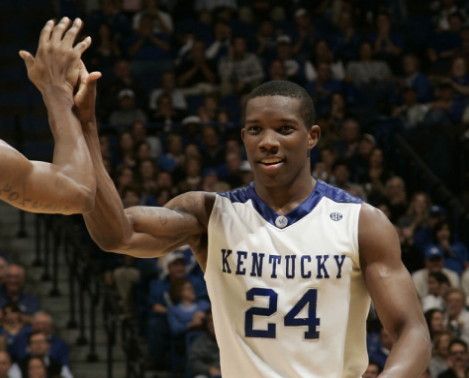 |
Bledsoe's decision to attend Kentucky was not without controversy, as the Wildcats were also actively recruiting John Wall (the nation's top ranked point guard and someone who played the same position Bledsoe did). Bledsoe's coach at Parker, Maurice Ford, had reservations about Bledsoe's choice and publicly questioned UK coach John Calipari's promises that Bledsoe would get an opportunity to play for the Wildcats, including playing alongside Wall. Said Ford after Wall signed with UK, "Like I told Coach Calipari, I can't see them playing together . . . He said they can, but they both play with the ball in their hands. I just don't see it getting done." ("Parker's Maurice Ford questions whether John Wall-to-Kentucky is good for his star player, Eric Bledsoe" by Kevin Scarbinsky Birmingham News May 20, 2009.)
As it turned out, Bledsoe was indeed given a great opportunity at UK and started with Wall in the all-freshman backcourt. Bledsoe was so impressive during the season that he began to catch the interest of NBA scouts, to the point that he was drafted 18th in the first round of the 2010 NBA draft.
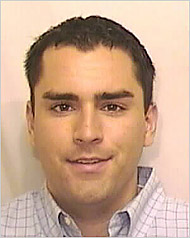 |
The article cites Bledsoe's high school transcript and claims that it would have been an "improbable academic makeover" to raise his grade point average high enough to qualify for N.C.A.A. competition. Among other accusations, the Times also insinuated that Ford paid for Bledsoe's family's $400 a month house rental, citing the landlord Brenda Axle as indicating she received payment from Ford a few times, although Ford directly denied paying any rent for the family.
Beyond the information presented, Thamel also seemed to take some cheap shots at the people involved, for example only acknowledging that Bledsoe's life up to that time difficult by making light of a few his mother's jobs when Thamel wrote: "Bledsoe had lived an itinerant life for much of his high school years, often staying with friends or relatives, while his mother held jobs such as working at an adult book store and doing custodial work at a hospital."
Despite the cache of having The New York Times associated with it, Thamel's article and insinuations began to fall apart when people began to scrutinize the information presented.
For starters, the article suggested that it would have been virtually impossible for Bledsoe to raise his overall grade point average from the dismal grades he had attained at Hayes. That would have likely been true if the new grades were simply averaged in with the old. However what Thamel failed to mention in any of his articles was that Bledsoe was able to retake some classes and replace his old grade with the new grade. In other words, Bledsoe could increase his overall GPA from both ends, adding better grades while at the same time selectively removing failing grades from the past. Given that, it wasn't nearly as difficult for Bledsoe (or any other student) to improve his overall GPA as Thamel seemed to suggest.
Another problem with Thamel's article came from the claim he made that the landlord, Brenda Axle said that Bledsoe's coach Maurice Ford paid her three month's of the rent for Bledsoe's family. This was misleading, as reported by Jon Solomon of The Birmingham News who did a far more thorough and fair investigation ("Eric Bledsoe relative, friend say they paid rent, not prep coach," July 7, 2010) into the issue than Thamel did. Solomon followed up on Thamel's story and found that a relative of Bledsoe's mother paid most of the rent along with a family friend. Ford had helped to locate affordable housing for Bledsoe's family and did a few times turn over rent money to Axle from others. This was due to Axle volunteering at Parker High School and thus it was a convenient way to pay the rent at times.
But all involved denied that Ford himself ever used his own money for Bledsoe's rent. Axle herself disputed the suggestion that Thamel and the New York Times made about Ford being the source of any money for the rent. Axle's recollection of the events was in accordance with what she had told the Alabama High School Athletic Association, which also investigated the matter after the allegations from the Times surfaced.
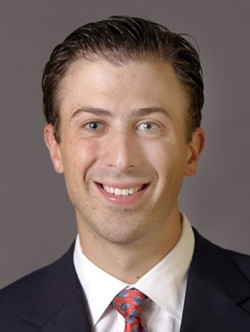 |
JPS Note: It likely will never be determined with certainty who leaked the information, but it is notable that there were only a select few people who had access to Bledsoe's grades. In particular this included the schools beyond Kentucky which offered him a scholarship and had access to his transcripts. These schools were Alabama, Cincinnati, Florida and Memphis. It's possible that a leak could have come from sources at any of these schools, although the motivation for doing so is questionable. It is notable that one of these schools employed a person who had not only the necessary access, but more importantly apparently the motivation to release Bledsoe's grades. That would be none other than Richard Pitino (son of the Lousville head coach Rick Pitino) who was an assistant with the Florida Gators at the time.
Incidentally, it should be noted that the original person behind the investigation of Bledsoe was not Thamel, but Pat Forde, a Louisville resident who co-authored a book with Louisville coach Rick Pitino. Forde reportedly had started his investigation in October 2009 when he was attending the SEC Media Days and literally started knocking on doors in the poor neighborhoods of Birmingham AL looking for dirt on Eric Bledsoe and DeMarcus Cousins. Around that time, Forde was barred from coverage of the University of Kentucky by his employer ESPN, likely due to a conflict of interest to go along with evidence of unprofessional agenda-driven work in the past. Forde appears to have handed off his investigation of Bledsoe to his friend Thamel. When the original Times story appeared, Forde lit up Twitter congratulating his buddy Thamel on what he considered a job well done, and conspicuously continued to tweet throughout the string of Thamel articles.
Of course no one in the general media thought to investigate an actual violation of federal law, which potentially would implicate one of their own along with revealing the misdeeds of someone in a position of authority. Whoever it was, this person had access to Bledsoe's records and presumably should have known better, yet they were shielded by the media's indifference.
Update:
Given these shocking revelations of corruption by the highest levels of the N.C.A.A., it is not far-fetched to conclude that the leaks with respect to Eric Bledsoe may not have come from a rival coach at all, but may instead have come directly from the N.C.A.A.!
Once the question of the fact that Bledsoe's grades were illegally released along with legitimate questions being raised about the veracity of the claims, Thamel and The New York Times seemed to go into hibernation on the issue for a time. But this changed a number of months later after the Birmingham News, following up with their own investigation, reported that Bledsoe had received an "A" in a class, for which a grade report had shown was a "C".
With that information, Thamel released a story ("Calipari's Past Looms Larger at Kentucky" September 14, 2010) in which he devoted much of the article criticizing UK coach John Calipari for past situations at the University of Massachusetts and Memphis, and hinted that the University of Kentucky could be forced to vacate games that Bledsoe had played in, if he were to be found ineligible. Wrote Thamel: "That information is expected to be forwarded to the N.C.A.A., which will determine whether Calipari can pull off an unprecedented triple crown - having seasons vacated at three universities."
Despite the claims made by the newspapers, it soon became apparent that Bledsoe's 'grade report' they had obtained and revealed in their stories was not the final grade for the course, but an intermediate mark. This detail was something that was not well explained in the articles. As with the original stories, neither Soloman nor Thamel explained where the 'grade report' came from, nor commented on the willingness of whoever their source was in breaking FERPA laws.
The aspect of this being an intermediate grade was confirmed a little over a week later when the Birmingham School District finally released the results of their own investigation, which was performed by an independent outside law firm. This investigation cost $10,000 and was financed by the Birmingham school district itself, despite being severely strapped for cash.
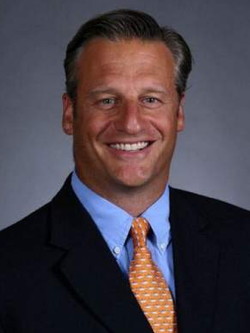 |
The report did uncover some troubling aspects, including the fact that none of Bledsoe's grade reports from his junior year were recovered from his previous high school, Hayes, which had been shuttered. This was not isolated to Bledsoe, as no such record for ANY student was recovered from the school. In addition, many grade reports from his time at Hayes were unavailable, despite a state law requiring that records be kept for a minimum of three years. But this was more an indictment on the Birmingham School system and in turn the city that Bledsoe grew up in than on Bledsoe himself.
In the end, there was nothing revealed in the report to compel a change in Bledsoe's grades by the school district. The N.C.A.A., in turn, had no reason to change Bledsoe's eligibility. Pete Thamel in his article on the finding ("Bledsoe Grade Change Questioned but Upheld," September 24, 2010) chose to cast the issue in the most negative light possible. Thamel once again started by describing Bledsoe's academic improvement as "improbable" and went on to fixate on the fact that the investigators questioned the change. Thamel wrote that it was "unlikely that the N.C.A.A. will look into the matter" rather than admit that his many previous claims of an N.C.A.A. investigation was still-born at best and moot.
JPS Note #1: In all of Thamel's articles, one point that he hardly acknowledged was the fact that throughout the process of recruiting Bledsoe, Kentucky was not only compliant with and abided N.C.A.A. procedures to the letter, but went beyond what was required of them. After Bledsoe passed the N.C.A.A.'s eligibility clearinghouse, U.K. on their own initiative requested and received a second evaluation of Bledsoe's grades to ensure that there were no issues with his eligibility.
The idea UK would have been found liable in the event Bledsoe was retroactively ruled ineligible from his time in high school was one that is a large leap based on increasingly erratic, inconsistent and poorly supported decisions by the N.C.A.A. of late. Despite Thamel's pleadings, there was absolutely no evidence or even suggestion of wrongdoing on the part of U.K. (or for that matter the N.C.A.A. itself who cleared Bledsoe to play twice, first by the clearing-house and again after a secondary evaluation.)
JPS Note #2: Another point that I think is worthy of mention is that the entire episode reeked of bias given the attention the New York Times and in turn the Birmingham papers paid to Bledsoe and his grades. I have to believe that if someone wanted to knock on doors digging for dirt, they could probably every year find at least one or two examples of a kid from Birmingham, Alabama or some other equally disadvantaged neighborhood who caught a break and ended up playing football at a place like Alabama, or Auburn or UAB etc. I don't think that's necessarily a bad thing, but it does make me question why Bledsoe was singled out for this treatment when numerous others aren't given a second look by the media.
Even for those who are scrutinized, there is bias evident. One doesn't have to look too far to find an example: football player, Michael Oher who was featured in the movie The Blind Side. Oher was a person who came from a disadvantaged background, yet caught a significant break when he was befriended by a wealthy family. Beyond the relationships developed, the film highlights his ability to work hard and make himself eligible for collegiate football and eventually fulfill his dreams of playing professionally.
By all accounts, Bledsoe came out of a difficult place and although it came late in his schooling, he worked extremely hard both in high school and in college (and in the pros) and did what he was asked to do (including finishing his classes at UK his spring semester, something many assumed he would not do.) In so doing, he was able to achieve his dreams, similar to what Oher did and is celebrated for (albeit Bledsoe did so without the luxury of being adopted by a wealthy and famous Ole Miss alum who provided him with the best tutors and advice). Yet for some reason this gives Thamel license to scorn Bledsoe and drag his name through the mud in front of the entire nation?
| Excerpt from "Handbook on Ethical Journalism" | Times' Grade |
|---|---|
13. In addition to this handbook, we observe the Newsroom Integrity Statement, promulgated in 1999, which deals with such rudimentary professional practices as the importance of checking facts, the exactness of quotations, the integrity of photographs and our distaste for anonymous sourcing; the Policy on Confidential Sources, issued in 2004. These documents are available from the office of the associate managing editor for news administration or on the Newsroom home page under Policies. - pg. 5-6. | |
| 19. The Times treats news sources just as fairly and openly as it treats readers. We do not inquire pointlessly into someone's personal life. Staff members may not threaten to damage uncooperative sources. They may not promise favorable coverage in return for cooperation. They may not pay for interviews or unpublished documents. - pg. 8. | |
40. Staff members may not serve as ghost writers or co-authors for individuals who figure or are likely to figure in coverage they provide, edit, package or supervise. They may not understake such assignments for organizations that espouse a cause.- pg. 13. |
| Synopsis | |
| Degree of Egregiousness |
|
| Conclusion |
Pete Thamel seems to fancy himself as one of the premier investigative reporters of college sports. His work has resulted in a number of serious allegations and people losing their jobs and tarnishing their careers. Unfortunately, in doing so Thamel has also demonstrated a propensity and indeed pattern in misquoting people, making up facts and misleading his readers to the point that anything he writes can't be taken at face value and needs to be vetted thoroughly. Thamel also has shown to be susceptible to a particularly bad trait of a number of national sportswriters, and that is to be extremely selective in the stories and investigations he pursues. This behavior results in witch-hunts motivated by personal biases and not based on objective criteria towards players at some schools, while other schools (such as Thamel's alma mater Syracuse which unlike Kentucky actually did suffer academic penalties due to low APR numbers, or Lance Stephenson's numerous questions surrounding his high school career which happened literally under Thamel's nose in New York City) are given a free pass. In the particular case of Eric Bledsoe, this was a story that was initiated based purely on spite, and not even originally by Thamel. He should have known better than to accept 'sloppy seconds' from Pat Forde for such a politically-motivated endeavor. In reality it was a witch-hunt from the outset. It should be an embarrassment that ESPN of all organizations, acted significantly more professionally when they forced Pat Forde to give up his ill-conceived quest, while the New York Times demonstrated no such professional restraint or standards. Note that I'm not saying that the Bledsoe issue shouldn't have been pursued or reported on. Only that the way Thamel came into it, he probably wasn't the right person to do so. Even if he had approached the story from an objective point of view (rather than as a hit piece as a favor for his buddy Forde), he apparently doesn't have the ability to do a professional or credible job anyway. |
![]()
Chicago Sun-Times - Anthony Davis
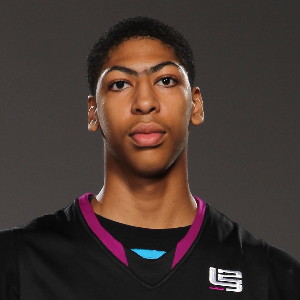 |
O'Brien was writing an article in his online blog about Anthony Davis, a local Chicago player who was quickly gaining national attention from recruiters, in large part due to a dramatic growth spurt which found Davis grow from a six-foot freshman to 6-10 by his senior season. [Davis' rise was so dramatic that not until April 24 of that year did most anyone even know who he was. This was due to a Youtube video produced by a local Chicago talent scout by the name of Daniel Poneman who saw Davis play for an AAU team Meanstreets; a team invitation Davis nearly declined because he was so disheartened at the lack of interest by scouts during his junior year.]
The Sun-Times article ("Source: Davis Will Choose Kentucky," August 4, 2010) originally had as its focus the news that Davis had made his decision for college and it likely was Kentucky. O'Brien cited as his source a little known Kentucky blog in his report. The article didn't have much substantive to say, but a section buried deep in the article near the end raised eyebrows.
O'Brien writes:
|
Rumors that Davis' commitment is for sale have surfaced since he cut his list of schools down about a month ago. "There is all kinds of speculation and innuendo out there in the recruiting world regarding his recruitment and if it is going to turn seed," recruiting analyst Joe Henricksen said. "But that's often the route that this story takes when you see a player emerge like this. Who knows what's true and what's not." The rumors/sources that have Davis choosing Kentucky are also alleging that the commitment cost $200,000. Davis Sr. has flat out denied everything. "We haven't asked anyone for anything and no one has offered us anything." Davis Sr. said on Thursday at a club basketball event in Merrilville, Ind. "It's a little unfair for a kid to have to listen to those type of rumors if they aren't true," Henricksen said. |
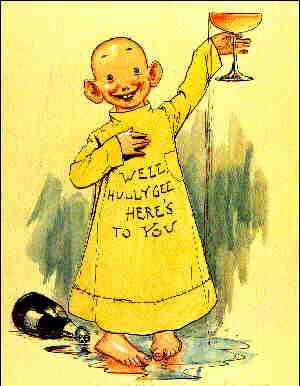 |
Soon afterwards the article was rewritten, with the Sun-Times changing the title to "Davis no longer a hidden talent." The rewritten article was largely positive about Davis' growth and development and the fact that he was still largely unknown, even within the city of Chicago. O'Brien noted that of the nearly 700 boys basketball games the Sun-Times covered during the 2009-10 season, not one involved Anthony Davis. Beyond changing the focus of the article, some of the quotes were removed, including the offending statement about a $200,000 payment.
By that time, however, the damage had already been done. The University of Kentucky had been incensed by the original article and its "unbelievably unsubstantiated" stories. In response, the University had their law firm quickly fire off a letter (which they also posted on their website) to the Sun-Times demanding that the story be retracted.
The letter said the following:
| Dear Mr. Brien (sic):
Please be advised that I represent the University of Kentucky with regard to an article you have published today on suntimes.com with the headline "Source: Davis will choose Kentucky." Please be advised that the article is false and defamatory and could lead to legal action against you and any entity publishing or republishing the article. Printing unnamed "rumors/sources" alleging that "the [Davis] commitment cost $200,000" goes far beyond responsible journalism, particularly when you have been advised by Mr. Davis that the "rumors" are untrue. As Mr. Davis has indicated, neither the University of Kentucky nor any member of its Athletic Department has offered or paid any money or other illegal benefit to the Davis family. Publishing false and unsubstantiated "rumor" as contained in your story constitutes defamation, per se, and will entitle the University and/or its coaching staff to seek both compensatory and special damages against you and any publisher, together with punitive damages for your malicious and willful actions. Please consider this a formal demand that you withdraw the publication from any source from which is has been published, and issue an immediate statement that you know of no credible evidence indicating that there is any truth of the "rumors" referred to in your article. Very truly yours, STURGIL, TURNER, BARKER & MOLONEY, PLLC Stephen L. Barker |
The Sun-Times went into lock-down with neither O'Brien, nor anyone else in the newsroom discussing the matter further or returning inquiries into their claim, from readers or from fellow journalists interested in investigating the allegation. Beyond that, no editor took responsibility for the article. (JPS Note: This is something which is not completely surprising, since editing and fact-checking seems to be a forgotten luxury among many news organizations, especially when it comes to reporter's blogs.)
For a brief time it appeared that the Sun-Times was on their way to mending their ways, given that the original story had been rewritten and the offending claim removed completely (albeit without any admission to the readers that the original story had been changed). However two days later the paper went in the completely opposite direction, and seemed to double-down on their original stake.
O'Brien's second article, titled "Prep Star at Center of Storm" (August 6, 2010) not only referred to the original claim but went further to state that Davis' father had his hand out during the recruitment. "Sources from three separate universities told the Sun-Times that Davis Sr. asked for money in return for his son's commitment, with the amounts ranging from $125,000 to $150,000. When reached Thursday, Davis Sr. declined to respond further saying: 'Thanks for ruining my son. Thank you very much.'"
The article led UK's attorney Stephen Barker to question the reporter's ethics. Said Barker in an article in the Lexington Herald-Leader: "The journalism ethics . . . seem to be absolutely thrown out the window. . .It seems to us a journalist has to chase down rumors and get credible collaboration. And that didn't happen, in our view . . I really thought that when they took it down yesterday, that they recognized the error." ["Kentucky lawyer questions reporter's ethics," (August 6, 2010)]
Added UK sports information director DeWayne Peevy in a released statement that Kentucky was "dismayed" by "the continued lack of professionalism and responsible journalism exhibited by Michael O'Brien and the Chicago Sun-Times in running yet another false and defamatory story."
JPS Note: I suppose O'Brien thought that by mentioning three anonymous sources, this was far better journalism than his previous work invoking an unspecified anonymous source. But once again, O'Brien failed to provide any specifics as to the identity of his sources or provide any useful details for anyone interested in following up the serious allegations, whether it be other journalists, interested persons, the N.C.A.A. or the Davis family themselves. And once again he and the Sun-Times went into lock-down, no doubt advised by their lawyers, and refused to answer any queries into their claims, methods or sources.
From a legal standpoint, this actually made sense for them. Rather than go into details as to the veracity of the claims and potentially opening themselves up to lawsuits, they shielded themselves from acknowledging any wrongdoing, whether in terms of journalistic integrity or legally, by hiding behind the freedom of the press and its apparent 'rights' to trample on the the rights of a teenage kid and try to publicly ruin his reputation with vague, unsubstantiated and unsupported rumors and innuendo. Obviously the 'rights' of the media to smear someone take precedence over the 'rights' of an individual to defend his name and face his accusers. (And I should note that at the time Davis was not a celebrity or known public figure. Beyond a select few recruiting junkies, Davis was a complete unknown, even in the city of Chicago.)
It is noteworthy that the follow-up story shifted the accusations away from the University of Kentucky (none of the Sun-Times three sources confirmed anything with respect to a supposed $200,000 as originally 'reported') and instead attacked Davis' father referring to lower levels of compensation. (i.e. none of the Sun-Times three sources apparently confirmed O'Brien's original claim, which begs the question of what became of it?) The only mention of the supposed $200,000 deal was to refer to their earlier (since removed) story. This was a difference that on the surface was virtually imperceptible, but from a legal standpoint was extremely significant.
I agree with Glenn Logan of Kentucky blogsite A Sea of Blue when he wrote:
|
Here is what I think happened here, and this is my opinion only: The Sun-Times defamed UK and Anthony Davis on Wednesday, and got caught in that act. It knew that a lawsuit was likely, and to forestall that lawsuit, it went out and found three witnesses who would vindicate their earlier story. They don't need to be reliable sources in this case, they merely need to be facially unconnected with the newspaper and have substantially the same story. The veracity of their charges is not particularly important to the Sun-Times, they merely need to be plausible. For that reason, they will remain unnamed. The Sun-Times will claim journalistic privilege to protect its sources, and only through an expensive discovery process would they by forced to disclose them. I strongly suspect they will not even disclose them to the N.C.A.A. If UK sues now, it has a much higher threshold to cross. It can no longer allege negligence, which was clear in the first article, but must prove actual malice. That bar is, for all intents and purposes, too high to reach without paying out a small fortune in investigative and legal bills which would be unlikely to be recovered from the financially strapped Sun-Times. By writing the article this way, the Sun-Times has effectively inoculated itself against a defamation suit, except at great cost to either UK or Mr. Davis. |
Similarly then-UK blogger and lawyer Matt Jones wrote the following about the issue, and in particular discusses the legal importance of the subtle difference between reporting the $200,000 as fact and simply referring to it in an earlier story:
|
Instead, what I think is much more likely is that this is a classic case of a newspaper mistake and a rush to engage in "cover your assdom" without understanding or concern for its ramifications. My guess is that Mr. O'Brien simply was writing a story about Davis Jr and decided to include gossip he had heard in the high school ranks. As part of a general profile, he thought he would include "rumors" of what Davis Jr and his father were after in the recruitment. O'Brien probably never thought twice about it. . .the conventional wisdom of the area says the Davis family is on the take, he thought he would write about it and since it was on the blog and not in print, no harm done. He threw this tidbit in the 9TH PARAGRAPH, hardly the place that one would put breaking news. My guess is that he never thought this was a real accusation or that it would get attention. . .if he did, it would have been the lead, not buried deep in the story. If O'Brien believed he was "breaking" a story or a scandal, the headline would have read, "Kentucky pays High School player." Instead he made a poor decision to go with a rumor, and no facts to back it up. Then things got out of control. Criticism of the story was harsh, and the accusation quickly disappeared. UK threatened to sue and probably for the first time, upper-level Editorial staff became involved. They cared little about a random blog post before, but now the national sports media was on their case and legal action was being threatened. It was time to regroup. The entire story was pulled, and a gameplan enacted. The Times did not however want to be seen as backing down to a lawsuit threat, so O'Brien called college Assistant coaches with which he was friendly and said, "hey, have you heard that Davis Jr is on the take?" They said yes in a "gossipy" rather than a "newsy" way and he went to his Editors and said, "see now I have THREE sources and we can re-run the story, with more backup and less 'rumor' talk." The Sun-Times then goes with this new story the next day. In the story, they fail to mention the fact that they made the decision to pull the story the day prior, conveniently leaving that part out because. . .oh well, it makes them look bad. By recasting the entire story this way, they have done two things: 1. Saved themselves from a lawsuit by UK. . .they retracted the original $200,000 accusation and repeated it only to "set the scene" in the news recap of the events, a cowardly way to handle the situation, but one that probably covers the paper from a suit. 2. Gave themselves protection from a lawsuit by Davis JR. While they went with the "three unnamed sources" quote, if sued they can claim that they weren't saying that Davis Jr HAD BEEN PAID, but just that the sources SAID he had been paid. That subtle difference is once again cowardly, but it allows them not to look like they backed down to UK and once again, cover their asses. From a legal standpoint, it was a smart way to play it. From a journalistic standpoint, it is a complete joke. Rather than admit a mistake, they attempt to cover themselves and act as if they did nothing wrong. . .refusing to comment to other news sources or even to ACKNOWLEDGE PUBLICALLY that they pulled the original article. . ..a cowardly, but altogether consistent, line of behavior for a newspaper to take when publically challenged. |
With that, the 'story' was largely dropped by the Sun-Times (save for a rehash of the charges when Davis signed with UK) and no further details or allegations were published from other outlets despite heavy media interest and scrutiny of Davis and his family. As CBS sports national basketball columnist Gregg Doyell said on a radio show in response to O'Brien's claim of three sources. "Unless the Sun-Times' reporter is Woodward or Bernstein, there is no way they got three different D-I coaches to say anything like that." Doyell later mentioned that Gary Parrish, Jeff Goodman, Andy Katz and Mike DeCourcy all tried could not get three D-I coaches to "tell them on or off the record about that level of cheating."
The only potential attempt to 'give the story legs' came from a curious comment made in one of the Sun-Times sister publications, The Aurora Beacon News which found reporter Rick Armstrong interviewing a highly regarded city recruit by the name of Ryan Boatright of Proviso East. The reporter asked Boatright whether he had 'heard" about the Davis scandal. Boatright responded that indeed he had. Where did this revelation happen asked Armstrong? "I saw it on ESPN last night," responded Boatright.
JPS Note: Normally one would question why this would have even been mentioned in the article at all. It revealed no news other than the fact that a high school basketball star watched ESPN, hardly earth shattering. But it goes well beyond that, as the article was titled "Boatright heard about alleged Davis deal" which seems to be a deliberate attempt by the paper to suggest more than was actually there.
If the intent of Armstrong's mention of Davis was to generate momentum for the Sun-Times story it failed to do that whatsoever, despite the misleading headline. If the intent was to support the idea that the 'rumors' of Davis having a hand out were well-known within Chicago basketball circles (as some people tried to claim at the time but never provided any evidence in support) it failed to accomplish this either. If anything, it demonstrated that a highly regarded Chicago-area prospect (who incidentally had himself also been recruited briefly by Kentucky at one point) had never heard these 'rumors', that is until after O'Brien made the charge and news of it went national.
The next few weeks were tumultuous for Davis and his family. With the Sun-Times not retracting their story, they felt it necessary to retain a lawyer and threaten to sue the paper themselves to reclaim their good name.
The easy thing for Davis to do would have been to drop Kentucky from consideration and look at other opportunities, especially since the Sun-Times hinted that the N.C.A.A. was investigating Kentucky over the issue [which in reality was a stretch since if anything the N.C.A.A. was inquiring into the identity of the Sun-Times' sources and what exactly they were claiming (just as everyone else was), which is different than an official investigation of a school.] Dropping Kentucky is exactly what a number of local Chicago schools would like to see, whether they were interested in signing Davis themselves or simply looking to protect their turf from outside schools.
As recruiting analyst Brick Oettinger mentioned "The people who are perpetuating these stories are college assistant coaches who are out there recruiting." Added another recruiting analyst Jerry Meyer, "Lets assume Davis is going to Kentucky. The competition might throw that out there to prevent the commitment from happening. There's a lot of misinformation out there." (both quotes from "Kentucky lawyer questions reporter's ethics" Lexington Herald-Leader August 6, 2010.)
Instead, Davis shrugged off the allegations and threats of further revelations and chose the school which presumably he had already decided to sign with when O'Brien's story came to light. He verballed to Kentucky August 13, 2010 and after a few months, signed his National Letter of Intent with UK on November 10, 2010. It's noteworthy that this period in time between Davis' verbal and his actual signing with Kentucky gave Michael O'Brien and anyone else plenty of time to substantiate their charges, which of course they failed to do. Davis' actions demonstrated his confidence that neither he nor his family were guilty of any wrongdoing, and that he would not be intimidated by baseless scare tactics.
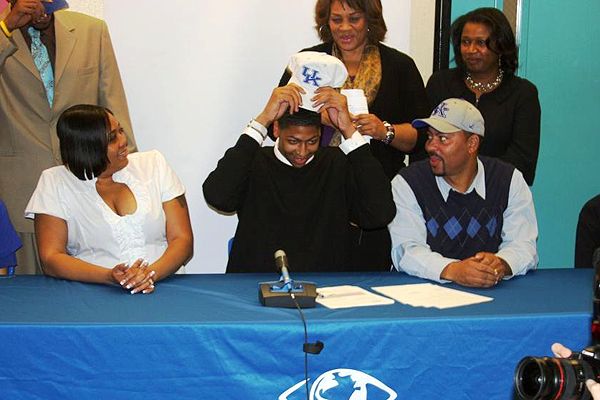 |
| Excerpt from "Handbook on Ethical Journalism" | Sun-Times' Grade |
|---|---|
| 2. For more than a century, men and women of The Times have jealously guarded the paper's integrity. Whatever else we contribute, our first duty is to make sure the integrity of The Times is not blemished during our stewardship. - pg. 3. | |
8. The Times believes beyond question that its staff share the values these guidelines are intended to protect. In the past The Times has resolved differences of view over applying these values amiably through discussion, almost without exception. The paper has every reason to believe that pattern will continue. Nevertheless, The Times views any deliberated violation of these guidelines as a serious offense that may lead to disciplinary action, potentially including dismissal, subject to the terms of any applicable collective bargaining agreement. - pg. 4 | |
9. Our fundamental purpose is to protect the impartiality and neutrality of The Times and the integrity of its report. In many instances, merely applying that purpose with common sense will point to the ethical course. Sometimes the answer is self-evident. Simply asking oneself whether a course of action might damage the paper's reputation is often enough to gauge whether the action is appropriate. - pg. 4 | |
13. In addition to this handbook, we observe the Newsroom Integrity Statement, promulgated in 1999, which deals with such rudimentary professional practices as the importance of checking facts, the exactness of quotations, the integrity of photographs and our distaste for anonymous sourcing; the Policy on Confidential Sources, issued in 2004. These documents are available from the office of the associate managing editor for news administration or on the Newsroom home page under Policies. - pg. 5-6. |
| Synopsis | |
| Degree of Egregiousness |
|
| Conclusion |
Words cannot adequately describe just how egregious and unprofessional Michael O'Brien's hatchet job was. He abandoned all journalistic values in favor of rumor-mongering and slander, with absolutely no factual information to back up his claims, even when pressed by readers and other journalists. Since that time, and despite national attention and scrutiny, no information whatsoever has been revealed that corroborate or substantiate O'Brien's claims in any way. Rather than own up to his mistake, or even following up his ill-supported claims with additional information of any substance, O'Brien and the Sun-Times instead chose to first remove the offending article without explanation, and then do just enough to protect themselves from being sued and promptly hid behind this country's generous "Freedom of the Press" laws. This is particularly galling, given the numerous examples just within the past year where legitimate news journalists from around the world have been harassed, threatened, physically attacked, raped and even killed while doing work that benefits society. These people worked in dangerous places often with nowhere near the rights that the United States generously affords its journalists. Meanwhile, O'Brien relied on and flaunted those same hard-fought rights to cover his ass, yet has done absolutely nothing to live up to the standards of those who truly would benefit from working as a free press. JPS Note: Some may wonder why the Davis family didn't follow through with their threats of a lawsuit. But the answer to that should be obvious. At the end of the day there were no lasting damages to Davis or his family, which would be required in order to win judgement. Davis signed with the school he wanted to sign with in the first place, so there were no demonstrable hardships caused by the news story.
As for O'Brien and the Sun-Times, they destroyed whatever credibility they may have had before their unfortunate decision to run unsubstantiated rumors, and revealed a complete lack of standards or accountability at the paper.
Two areas which were not explored but which I suspect played some role in the whole controversy was 1.) the sudden rise of Davis' fame not just nationally but in the city of Chicago and 2.) the fact that Davis chose not to enter the rat-race of high profile Chicago basketball circles in the first place. Remember that most people in the city weren't even aware of Davis' talents until just a few months earlier (April 26, 2010) when word leaked out on Daniel Poneman's Youtube video. Local Chicago and area schools suddenly found themselves competing for a kid literally under their nose who they had ignored until that time, against national powers. This set of circumstances made them especially vulnerable and likely desperate, and could have easily resulted in the type of rumor that O'Brien foolishly repeated.
Beyond this, because of his late growth spurt, Davis was also largely ignored by the traditional Chicago basketball powerhouses until relatively late in his high school career. Davis chose to stay at his charter school and play with his childhood buddies, which may have rubbed the establishment (including possibly O'Brien who covers Chicago area hoops) the wrong way. This resulted in a number of slights in terms of coverage and honors, including the interesting juxtaposition of Davis being named the #1 rated player in the country by national recruiting experts, yet not only did he fail to be named the top prep player in the state of Illinois, he came in fourth place as voted on by coaches and local sportswriters. Sportswriters also failed to name Davis the top player in the city of Chicago.
If anything, this controversy probably reveals more about the Chicago prep basketball industry and the media people that cover it, than anything it was supposed to reveal about Anthony Davis Jr.
|
![]()
At the same time Pete Thamel was bungling the Eric Bledsoe story, he somehow managed to spread his ineptness to another continent. This came about when Thamel found himself in Turkey covering the 2010 FIBA World Championships and while there planned to take some time out to interview Nedim Karakas, basketball general manager for the Turkish sports club Fenerbahce Ulker, concerning the case of Enes Kanter.
Kanter was a high profile player who came to the United States from Turkey. He made a name for himself when he broke Dirk Nowitzki's scoring record in the Nike Hoop Summit game. After originally verballing to the University of Washington, Kanter reopened his recruitment and signed with Kentucky where he became the centerpiece of UK's #1 rated recruiting class.
The reason someone from Fenerbahce was interviewed was due to the fact that a few years earlier when Kanter was a young teenager, he was part of the Fenerbahce club basketball program. This before Kanter's father decided to buck the system and sent Enes to go to the States at the age of 16. While in Turkey, it was known that Kanter played with older players, including participating with and against professional teams. It was reported that at the time he chose to go to the United States, the Kanter's turned down a proposed two-year, $4 million dollar offer from Olympiakos of Greece and a five-year, $6 million dollar offer from Fenerbahce.
The Kanter case was noteworthy for a number of reasons, but one significant reason was that it was a test of the N.C.A.A.'s newly enacted rules, which made it possible for players who played in the presence of professionals to still retain their amateur eligibility. Beyond that, the players could receive "actual and necessary" expenses.
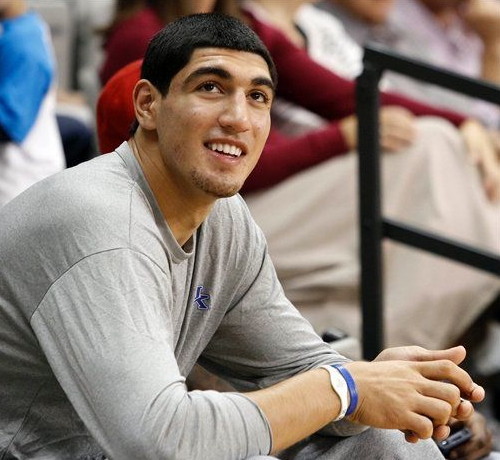 |
Unfortunately for Kanter and Kentucky, during the time the N.C.A.A. was actively reviewing Kanter's eligibility, Pete Thamel released a story in the New York Times ("Turkish Teams Says it Paid a Top Kentucky Recruit" September 7, 2010) which on it's face, suggested that Kanter was a professional player and obviously was not eligible to play collegiately. The source behind this was Karakas, who claimed that the Fenerbahce club paid over $100,000 in cash and benefits over a three-year period, including a $6,500 salary his final season.
Thamel's story sounded convincing, and to those who weren't familiar with the N.C.A.A.'s recent ruling it appeared obvious that Kanter was a professional and thus not eligible for collegiate basketball.
However as with other Thamel stories, once the story was looked at critically and in detail, it revealed numerous problems. One serious mistake in Thamel's story was the part where he interviewed Rodney Crawford, an assistant coach at Duquesne, who was familiar with Kanter's recruitment along with Kanter's advisor Max Ergul. Thamel quotes Crawford as saying about Ergul:
When asked about Ergul's role in Kanter's life, he said: "He's his adviser. That would be a good way to put it." He added: "You know, that's another thing I can't really speak on. I just took a coaching job at Duquesne; you know how the game is, I can't afford to say anything."
The problem with this scenario is that after the article was released, Crawford was specifically asked about this quote and took exception to it, just as those quoted in Thamel stories on Eric Bledsoe disputed Thamel's presentation of their words. According to Matt Jones of Kentucky Sports Radio.
|
Late (Tuesday) night I spoke with Rodney Crawford and he says that Thamel completely misrepresented his comments and even used quotes not made about Kanter or Ergul in the story. "Max is a great guy and Enes is a great kid," Crawford said. "Never in a million years would I say something negative about those guys. The thing I was saying was that I don't want to speak on Max or anyone else without talking to them first. There was nothing negative about it, I just was saying he was my friend and I didn't want to talk about him to the press." Crawford added, "he then took it and made it look negative." Even more upsetting however to Crawford was the second quote used by Thamel, in which he quoted Crawford as saying, "You know, that's another thing I can't really speak on. I just took a coaching job at Duquesne' you know how the game is, I can't afford to saying anything." Crawford says that while he said those words, it was about a situation completely apart from the Enes Kanter story. "He asked me about a totally different guy that I don't want to talk about and it was something that was about a completely different situation. That quote wasn't even about Max or Kanter and he [Pete Thamel] knows that." ("Assistant Coach Says His Words on Enes Kanter, adviser were taken out of context by New York Times by Tim Gardner, USA Today Blog, September 8, 2010.) |
The New York Times never issued a retraction for this grievous error. Beyond that, there were other oversights. In particular, Thamel failed to mention that when Karakas was interviewed, it was translated from Turkish. It's customary in such cases where an interview is conducted in a foreign language for the news organizations to note this fact, primarily to let their readers know that meanings may be 'lost in translation'.
In most cases, criticism of such an omission would be an extremely minor, however in this particular situation it is potentially critical. The reason being that according to Thamel, Karakas claimed that at one point Kanter received a "salary of more than $6,500 a month during his final season."
The use of the term 'salary' is crucial for a number of reasons: 1.) if Kanter indeed had received a salary, then it would have been a cut-and-dried case for the N.C.A.A. to rule him ineligible 2.) if Fenerbahce had indeed paid Kanter a salary, then this appears to be in direct violation of FIBA rules, which the Fenerbahce team was under, due to Kanter's young age at the time.
Instead of probing or clarifying or challenging Karakas' claims, Thamel not only went along with it but continued to use the 'salary' term in all his subsequent articles about Kanter. This despite the fact that the N.C.A.A. never determined that Kanter had received a salary. The mere fact that the N.C.A.A. took the better part of a year to arrive at a ruling of Kanter's eligibility, including a number of months after Thamel's claims were published, confirms that the ruling was far more complicated than Thamel's simplistic claims would suggest.
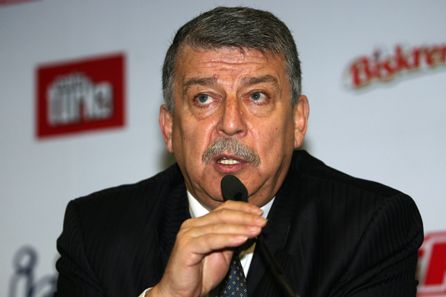 |
In response to Thamel's article, Kanter's father, Dr. Mehmet Kanter, exchanged emails with Mike DeCourcy (columnist for The Sporting News) and reiterated the aspect of Fenerbahce having less than an impartial role in Kanter's eligibility. According to Kanter's father, Fenerbahce was doing whatever they could to see he was ineligible "because they are trying to set an example with my son to coming generations in Turkey, so they can control and use the talent and youth any way they like to." (from article "Enes Kanter's father says Turkish Club is 'Trying to make an example' of his son" Sporting News October 5, 2010.)
Kanter's father disputed that a salary had been demanded from the team. "Never once" said the elder Kanter. "I always try to protected (sic) Enes from anything might damage his future." Kanter's father also noted that Enes had been offered to participate with the Turkish team in the FIBA world championships, but chose to refuse the invitation because it would cause him to miss a month of classes, leading him to become ineligible academically to play for UK in the 2010-11 season.
The back-and-forth arguments between Karakas and Kanter's father were continued a week later when Pete Thamel released parts of an email exchange he had with the Turkish GM in order to counter the elder Kanter's comments, along with addressing a comment by Kentucky coach John Calipari that Karakas had "four million reasons" to suggest Kanter was a professional. (The 'four million reasons' refers to a potential transfer fee that Fenerbahce could earn if Kanter had been under contract with them in the event another team (such as from the NBA) signed him.) In Thamel's story, Karakas restated his original comments but in addition made a number of questionable claims.
|
"We have no intentions to ask for a release fee from either an N.B.A. franchise or any other pro club outside of Turkey," Karakas wrote in an e-mail on Monday. "Fenerbahce is not going to demand for any fee for releasing his rights and will respect FIBA's International Rules." . . . Karakas said the club was wealthy enough that it did not need the fee, which European basketball observers estimate at less than $500,000. Karakas said the club has an annual income of $275 million and is building a sports center in Istanbul that will cost more than $300 million. The club is considered one of the most prestigious in the EuroLeague, and its reputation in Turkey is similar to that of the Los Angeles Lakers and the Boston Celtics in the United States. "Three or 4 million USD would not mean that much," Karakas wrote. "So before he [UK coach John Calipari] talks to press, I would advise Coach Calipari to learn more about the people and/or institutions he will brag about." ("Top Recruit's Eligibility Remains a Question" by Pete Thamel The New York Times October 12, 2010.) |
JPS Note: The claims by Karakas are peculiar, and frankly hard to believe. It's hard to know exactly what the $275 million figure is based on, but from various sources, the number appears to be significantly less than half of that. For example Business Week suggests that for 2011 Fenerbahce had total revenues of just over $100 million. Other sources point to an even lower figure of around $63 million. More importantly, whatever the annual revenue actually was, the figure is for the entire sports club, of which basketball is only one component of many, and not even the most important one as football (soccer) is the major sport.
The claim that the club would not ask for any release fee is even more mind-boggling, since that is standard practice among European club teams. (Of course maybe Karakas meant to say that Fenerbahce wouldn't ask for a release fee because Kanter never was under contract with Fenerbahce, so the club never held rights to him in the first place and thus wasn't legally eligible for such a fee.)
But just for the sake of argument, let's assume Fenerbahce did hold rights to Kanter. Thamel doesn't indicate who provided him the estimate of less than $500,000 or what it was based on, but that too appears to be significantly off, this time on the low side. Although each situation is different, a recent comparison would be that of Ricky Rubio who commanded a transfer fee of more than 5.3 million USD (3.5 million Euros) when he signed with Regal Barcelona. Rubio was the #5 overall pick in the NBA draft choice by the Minnesota Timberwolves in 2009. (In comparison Enes Kanter was a #3 overall pick in the 2011 NBA draft.)
The point of bringing this up is that these are examples where Thamel seems to take at face value anything and everything the Turkish GM says, no matter how exaggerated or ridiculous it may appear. On the other hand, Thamel seems to give short shrift to the counterclaims of the Kanters.
What is frustrating in all of this, is that if ANY news organization had the resources to objectively question and evaluate the claims of a large organization like Fenerbahce, one would think it would be The New York Times. Yet they seem to be content taking shots at a teenager trying to gain eligibility to play college basketball (and along the way making a number of specific decisions intended to protect his amateur status), rather than honestly questioning the actions of a multi-million dollar business with strong financial motivations to discredit him, but also to fundamentally undermine the N.C.A.A.'s own attempt to be more accommodating to the situations of young European players who are often held at the mercy of club teams. I don't think it's a lack of resources, but rather a reflection of Pete Thamel's agenda, that he failed to seriously pursue anything that scrutinized Fenerbahce and its motives.
Another notable mistake by Thamel in the article was when he referred to part of Mike Decourcy's article where the elder Kanter was discussing his younger son, Kerem, who Dr. Kanter also removed from Fenerbahce in favor of Arlington Country Day School in Florida. "He loves basketball and he is becoming good at it. Also, he is very smart and academic and loves to study," Dr. Kanter is quoted about his son Kerem.
Unfortunately, Thamel was sloppy with this quote also as in his article he mistakenly stated that it was about Dr. Kanter's elder son, Enes, and included a response from Karakas taking a personal shot at Enes by saying: "Enes has a good basketball potential yet academically, he is not gifted as much."
Surprisingly, rather than ignoring the error the New York Times actually printed a correction due to this mistake, something they have been negligent in doing in the past.
JPS Note: Taken by itself this mistake by Thamel is minor, but looking at the broader picture it once again illustrates a pattern. Mind you, this mistake occurred after he had already been found guilty multiple times to misquoting people.
As far as the shots at Enes Kanter's academics, that is just in poor taste all the way around, unnecessary, uncalled for and likely wrong. The fact of the matter is that despite the doubts of many of Kanter's critics, Enes did well academically and did complete his classes at Kentucky. He did this, mind you, in a non-native and newly learned language. Few of his critics ever acknowledged that Kanter worked hard academically, even well before he became a basketball phenom. The following excerpt from an article by Tamer Turkman of "Study in America" provides background on this very issue:
|
"When Enes was 10 years old, his family registered him for entrance to The Samanyolu School in Ankara, Turkey (www.samanyolu.k12.tr). Since I have been working with Turkish education since 1993, people tell me I am an expert with Turkish Education so let me fill you in. This school is one of Turkey's most competitive and accepts less than 1% of its applicants. For 4 of the past 5 years, the student with the highest score on the Turkish National Entrance Examination graduated from Samanyolu. When Enes was 9 years old, he like most other of this school's applicants spent day and night cramming for its entrance examination. He passed and was admitted to this prestigious institution. I should also say the tuition for this school is 20,000+ USD that Dr. Kanter I am sure was proud to pay. If Enes wanted he could have had a more relaxed 9th year in life and Dr. Kanter didn't have pay a cent if Enes was to study at a normal state school. Also, at the age of 10, Enes never even picked up a basketball in life. It was only when his Physical Education Teacher saw how tall Enes was getting, he said you should try basketball. Enes shot his first hoop at the age of 13." ("Enes Kanter and Education" by Tamer Turkman Study in America October 19, 2010.) |
Many critics assumed that Kanter would bolt for the professional leagues once he was determined to be ineligible collegiately, however he stayed at Kentucky and lived up to his word that he was interested in obtaining an education. In fact, the N.C.A.A. actually used Kanter's academic record in its APR report, despite not allowing him to play. (In other words Kentucky took all the risk and received little of the reward for taking a chance with Kanter. UK's APR would have been negatively affected if Kanter had not stayed at the school or had blown off his classes, although the school was not allowed to have him play for them on the court.)
Finally in early November, the N.C.A.A. made their decision regarding Kanter, ruling that he was ineligible due to $33,033 above his "actual and necessary" expenses. Thamel in his article on the decision ("N.C.A.A. says Turkish Center can't play at Kentucky" The New York Times November 11, 2010) misleads his readers when he noted: "The decision did not come as a surprise to many around college basketball, as it was known that Kanter had played for Fenerbahce's senior team in EuroLeague games. Steve Smith, the coach at Oak Hill Academy, a prep school powerhouse in Virginia, said he did not feel comfortable taking Kanter on his team because he had played in top-level professional games in Europe."
JPS Note: The reason why I say Thamel misled his readers was because he willingly deceived them by not providing the full and proper context. The fact was that simply playing with or against professional players was no longer sufficient to make someone ineligible, as Thamel suggests to his readers. Thamel failed to note that the N.C.A.A. had specifically passed Proposal 2009-22 in order to allow a broader range of athletes to retain eligibility collegiately.
As John Infante of the N.C.A.A. noted on the organization's blog the week prior to the decision (November 4), the organization knew that foreign clubs had a propensity for "moving athletes around different levels of the organization (i.e. youth players up to the professional team or professional players down to the youth team) for the purpose of jeopardizing the eligibility of their youth players." This was exactly what Fenerbahce was guilty of doing, and exactly the practice the Proposal 2009-22 was intended to address.
Thamel had quoted Oak Hill coach Steve Smith previously, yet again, what Steve Smith may have thought about the fact that Kanter played with professionals is likely irrelevant given that between the time Kanter was originally looking at prep schools (i.e. the time Smith became aware of Kanter) and when Thamel wrote his articles, the rules were changed to allow this to happen without jeopardizing eligibility.
Once again Thamel repeated his claim of Kanter receiving a salary, but provided no evidence to support this from the N.C.A.A.'s findings. Mike DeCourcy noted in his article on the N.C.A.A.'s decision that "The NCAA revealed in its declaration of Kanter's ineligibility that the amount in question is $33,033. According to a source close to the process, about $20,000 of that money was used by the Kanter family to pay for Kanter's educational expenses - such as schooling and tutors - with the remainder still sitting in an account unused. The NCAA told the family that Fenerbahce would have needed to pay for those expenses directly for them to be permissible. The Kanters made it clear they were willing to return the available funds - and even repay the 20 grand because they weren't aware of NCAA procedures and regulations - but the staff declined the offer." ("Comment: NCAA fired an Airball on Kanter Ruling" Sporting News November 11, 2010)
JPS Note #1: In other words, there is a huge disconnect between what Thamel claims (that Kanter was paid a salary) and what was reported elsewhere (that the money was used for educational purposes or sitting in a bank unused, and would have been acceptable to the N.C.A.A. if only the club had paid the school(s) directly.) This, BTW, is closer to the American system where from the N.C.A.A.'s perspective it's perfectly legal for shoe companies and other outside interests to directly support basketball programs of prep schools (not to mention AAU teams) which in turn can turn around and offer top prospects scholarships (worth up to tens of thousands of dollars a semester) for private-school tuition along with the perks of travelling around the country playing in basketball tournaments and events and outfitting them with the latest apparel.
It should be noted that at the time of the ruling, it was said that the N.C.A.A. ruled Kanter ineligible based on looking at one season's worth of receipts/transactions, Kanter's last with the Fenerbahce club. The assumption by some being that with more seasons the findings would be worse. However, Kanter's lawyer, Timothy Epstein, shed some light on this particular tactic which suggests what the N.C.A.A. did was pick a worst-case (and potentially misleading) scenario. Per an article by Marc Spears:
|
"Kanter's lawyer, Timothy Epstein, disputed the NCAA ruling for several reasons, claiming the money Kanter was allowed to receive for rent was incorrectly based off the average for the entire country of Turkey instead of solely the city of Istanbul; Kanter's family wasn't allowed to claim educational expenses like money used to pay for a computer and tutors; and the NCAA looked only at the final year of the arrangement in which Epstein says some of the expenses paid by the club were for deficiencies from two years prior." (by Marc Spears Yahoo! Sports "NBA Scouts Keep Eye on Kanter as he Sits" March 16, 2011.) |
Subsequent conversation with Mr. Epstein revealed that if all three years that Kanter was with the club had been considered, Fenerbahce actually still owed the Kanters reimbursement money, rather than there being excess monies paid to the family.
JPS Note #2: Another point that I feel needs to be made concerning this whole issue, is one that Pete Thamel and the New York Times completely avoided. This concerned the utter hypocrisy the N.C.A.A. displayed during the entire ordeal, especially in comparison to other cases going on at the same time the Kanter case was in process.
Another case involved Renardo Sidney who eventually was cleared to play at Mississippi State after sitting out one season and part of another. Sidney was investigated by the N.C.A.A. and found to have received improper benefits, including allegations that his father improperly used funds from a nonprofit in conjunction with an AAU team Sidney's father coached. Sidney's father was also found to have been a paid consultant for the shoe company Reebok (with Sidney's mother his personal secretary); a position which the N.C.A.A. deemed "would not have been available were it not for the student-athlete's athletic skills and reputation". Sidney (a native of Jackson, Mississippi) moved to the West Coast with his family to play basketball at Fairfax High School in Los Angeles, during which time the family lived in upscale temporary housing including a $1.2 million home.
If this was not enough, during the investigation it was found that Sidney "violated NCAA ethical conduct rules when he provided false or misleading information throughout the eligibility process." The N.C.A.A. fined Sidney $11,800 for the improper benefits, but still allowed him to be reinstated to play collegiately. He has since had a unremarkable career at MSU, beyond a number of suspensions and fights with teammates. (above quotes from N.C.A.A. statement as reported in article, "NCAA Fines Renardo Sidney, Rules Him Ineligible" by Lance Pugmire Los Angeles Times March 5, 2010.)
In both of these cases the N.C.A.A. preserved and expanded on their policies allowing impermissible benefits received by athletes to be repaid, and their eligibility restored. No such consideration was afforded the Kanters, despite the Kanter's stated willingness and desire to do so, to go along with their actions of the past which without a doubt demonstrated this desire to retain his amateur status.
Other cases at the time involved the Auburn football program with their eventual Heisman winner Cam Newton, along with the Ohio State football program. In each of those cases, the N.C.A.A. went to great pains to narrowly define, reinterpret and outright ignore their own rules to allow high profile players to retain their eligibility and continue to compete.
Perhaps cognizant of the wild inconsistencies in the N.C.A.A.'s rulings, John Infante in his N.C.A.A. blog seems to try to argue that the Kanter ruling should not be used as a precedent for future cases, when he writes "If all cases gain value as precedent, expect slower and more complicated rulings that punish student-athletes more harshly. The Committee on Student-Athlete Reinstatement will be wary about opening a bunch of Pandora's boxes." In other words, Infante seems to admit that using their own decisions as precedent would entangle the N.C.A.A. further in an intractable morass of inconsistencies. Frankly it's already too late for that. And in the particular case of Kanter, Infante's statements seems to suggest that by holding others to the exact same standards and rigor that the N.C.A.A. used with Kanter, that others would be dealt with more harshly. It's at least nice to see something like this admitted in print.
Notable in the events was new N.C.A.A. president Mark Emmert. Typically the N.C.A.A. president does not involve himself directly, much less publicly comment on eligibility investigations but Emmert proved to be an exception. After Kanter's appeal to the N.C.A.A.'s decision, Emmert was asked by CBS analyst Seth Davis about the N.C.A.A's decision and its denial of Kanter's appeal. Emmert, who had been vocal in the past about Kanter was emphatic, stating "The facts are utterly unambiguous, the rule is utterly unambiguous, and the intention of the membership is utterly unambiguous. . . The vast majority of people in collegiate basketball knew that this was an issue with Enes Kanter. Kentucky knew it. Everybody who talked with him knew it. So I'm amazed that people are shocked by the fact that he is ineligible." ("Hoops Thoughts" by Seth Davis, SI.com, January 10, 2011)
Emmert's remarks beg a number of questions. As mentioned previously, if it was so clear that Kanter was ineligible, why did it take so long for him to be declared so ? While it is true that there were always concerns about his eligibility and it was never a given, most of that was due to previous rules of the N.C.A.A. prior to adoption of Proposal 2009-22 (which as passed in January 2010 and became official the following August). With the change in the rule it was certainly possible, as evidenced by the successful eligibility of fellow Turkish player and one-time teammate of Kanter's Deniz Kilicli, who grew up playing for a Turkish sports club similar to Kanter and eventually became eligible to play for West Virginia, even without the benefit of the rules change which was enacted shortly afterwards.
More pertinently, it just so happened that when Kanter verbally committed to the University of Washington, the president of the university at that time was none other than Mark Emmert. (Emmert also happens to be a native of Tacoma Washington, and holds a B.A. degree from the University of Washington, along with a doctoral and masters degree from Syracuse University (the alma mater of one Pete Thamel.) If Kanter was so clearly ineligible from the outset as Emmert now claims, why did the University of Washington accept his commitment in the first place ? Does anyone really believe that if Kanter had stayed at Washington that Emmert would have overruled his athletic department and coaching staff and forced them to withdraw the offer ?
The whole issue reeks of hypocrisy and even personal vindictiveness by Emmert and the N.C.A.A. Even Dick Vitale noted on Twitter and during a game telecast that he thought the only reason Kanter's appeal was denied was because he had signed with Kentucky. It reveals the organization as something that is corrupt, inconsistent, accountable to no one, and ultimately has strayed significantly from its original mission.
I agree with Mike DeCourcy who wrote:
One example being the case of Josh Selby of Baltimore M.D., where it was found that Selby had accepted improper benefits on the order of thousands of dollars from a business manager associated with NBA players, in addition to allowing Selby to drive his Mercedes-Benz. The N.C.A.A. investigated and despite confirming the improper benefits, allowed Selby to play collegiate basketball after a nine-game suspension and requiring him to pay back the expenses to a charity (although according to an article in the Lawrence Journal World, Selby did not have to pay the money back prior to playing and could use his scholarship checks to do so). Selby played a single season for Kansas before turning pro. Reportedly, Selby left school prior to the end of the spring semester in order to prepare for the NBA draft. Selby fell to the second round of the draft, despite being considered one of the very top prospects coming out of high school.
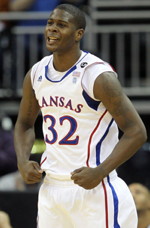
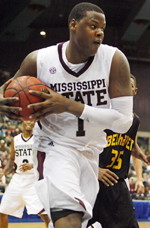
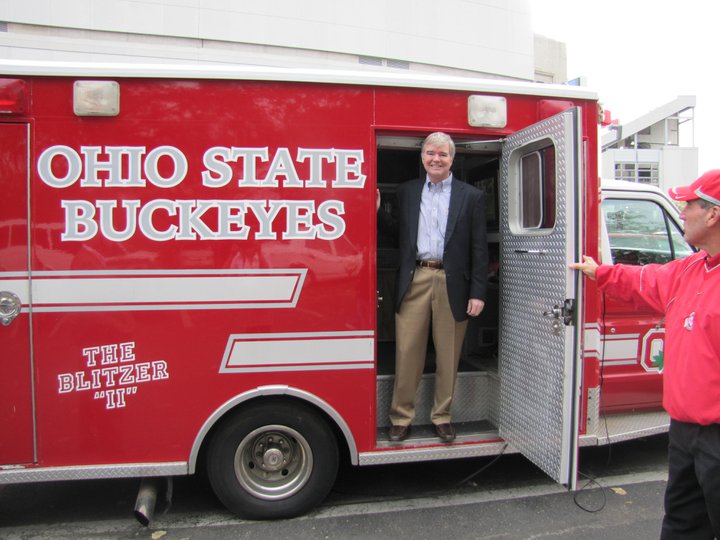
|
"What is frustrating about the NCAA's decision is its guiding principle in many amateurism cases has been the 'intent to professionalize.' For Kanter to "professionalize" would have been quite simple. He could have stayed home. He could have signed a contract with Fenerbahce worth multiple millions of dollars. He could played in front of his family and friends and quite possibly have been selected this past summer to compete with the Turkey national team that, in its home country, finished second in the FIBA World Championships. If he'd been on that team, he would have received a condominium and a share of an $18 million bonus pool created for the players by the Turkish government. Given all of this, Kanter's intent to "amateurize" was quite clear. He left his home. He traveled roughly 5,000 miles to the United States. He searched through several prep schools to find one that would allow a player who had competed in games with professionals to participate on its team. He worked to achieve academic eligibility to compete as an NCAA freshman. He enrolled at the University of Kentucky and attended summer classes and passed on the national team because it would have interfered with fall semester classes at UK. And then he subjected himself to the NCAA's excruciating and invasive amateurism review. The process is unpleasant, unyielding and at times unfair. But Kanter and his family endured all of it. One might expect a person willing to fight that hard to be a part of intercollegiate athletes is someone the NCAA staff would want to include in its competitions. But one would be incorrect." ("Comment: NCAA Fired an Airball on Kanter Ruling" by Mike DeCourcy, The Sporting News November 11, 2010) |
| Excerpt from "Handbook on Ethical Journalism" | New York Times' Grade |
|---|---|
9. Our fundamental purpose is to protect the impartiality and neutrality of The Times and the integrity of its report. In many instances, merely applying that purpose with common sense will point to the ethical course. Sometimes the answer is self-evident. Simply asking oneself whether a course of action might damage the paper's reputation is often enough to gauge whether the action is appropriate. - pg. 4 | |
13. In addition to this handbook, we observe the Newsroom Integrity Statement, promulgated in 1999, which deals with such rudimentary professional practices as the importance of checking facts, the exactness of quotations, the integrity of photographs and our distaste for anonymous sourcing; the Policy on Confidential Sources, issued in 2004. These documents are available from the office of the associate managing editor for news administration or on the Newsroom home page under Policies. - pg. 5-6. | |
| 15. The Times treats its readers as fairly and openly as possible. In print and online, we tell our readers the complete, unvarnished truth as best we can learn it. It is our policy to correct our errors, large and small, as soon as we become aware of them. - pg. 7. | |
18. Staff members who plagiarize or who knowingly or recklessly provide false information for publication betray our fundamental pact with our readers. We will not tolerate such behavior. pg. 7. | |
| 19. The Times treats news sources just as fairly and openly as it treats readers. We do not inquire pointlessly into someone's personal life. Staff members may not threaten to damage uncooperative sources. They may not promise favorable coverage in return for cooperation. They may not pay for interviews or unpublished documents. - pg. 8. |
| Synopsis | |
| Degree of Egregiousness |
|
| Conclusion |
As with many of these examples, the fundamental issue addressed on this page is not whether Enes Kanter was eligible to play college basketball or not. The issue is whether the media, and in this particular case Pete Thamel and the New York Times, did a fair and impartial job in reporting the facts surrounding the Kanter eligibility issue. This they clearly did not do, whether it was by misquoting those they interviewed, failing to provide all the facts, or giving a one-sided and misleading view of the situation to their readers. More importantly, Thamel continued to make a false claim of a salary being paid that in the end, the N.C.A.A. did not corroborate despite having full access to the records. Beyond the sloppy journalistic work on the part of Thamel, what is disappointing about his and the Times' coverage was how completely they sided with the various powers-that-be that were aligned against a teenager who had straightforward, simple, and laudable goals and lived up to everything he said he would do (even after he was declared ineligible). Kanter's basic intent was to earn an education, while maintaining his eligibility to play basketball. He earned an education, all right! Kanter's actions backed up his words, and numerous times he (and his family) spurned numerous professional opportunities to maintain his amateur status. Yet Thamel barely acknowledges this. Instead Thamel takes up for and promotes large and powerful entities which (in the form of Fenerbache) have a very clear motive to be hostile to the Kanter's (or anyone leaving Europe in hopes of playing collegiate basketball in the U.S.) decision and deceptive in what they claim to the media. Similarly Thamel gave the N.C.A.A. a free pass, despite that organization being contradictory to the intent of its own rules, contradictory to the spirit of promoting the student-athlete, and hypocritical in its ruling, in comparison to other cases where the N.C.A.A. was significantly more lenient. The mere fact that the President of the N.C.A.A. actively involved himself in an eligibility issue, over a player that the school he previously was President of (the University of Washington) also recruited and received a verbal commitment from, would seem to be enough of a red flag to raise questions among seasoned (and non-seasoned for that matter) investigative journalists. Thamel apparently doesn't measure up to that standard, however. As it turned out, the Fenerbahce organization was rotten from the head down, as it was found (by others, not the New York Times) in the summer to 2011 to be heavily involved in an industrial scale match-fixing scandal concerning its football club. Implicated in the scandal were top officials of the club, including its President Aziz Yildirim. This resulted in the removal of Fenerbahce from the UEFA Champions League, which it had been a member of. While the on-going scandal revolves primarily around football, in August of 2011 it was found that the Fenerbahce basketball team managers were also involved in game fixing with referees. Although it's not known whether he is a witness or a suspect, it is known that one of the managers interrogated by police over the game fixing includes General Manager Nedim Karakas. While this scandal obviously wasn't known at the time Thamel conducted his interviews, it does underscore the question as to why such implicit trust was put into the words of Fenerbahce's officials (as Thamel seems to do), when numerous signs were already present (not only from Kanter but from other players who had played for the club) to question their trustworthiness and indicate that the club worked with an ulterior motive when it came to the Kanter situation, among other European players. It's unfortunate the New York Times can't be trusted to present a complete and truthful account in the Kanter case. Regrettably, their continued association with Thamel has contributed to a steady decline in basic journalistic standards, undermining the credibility of the entire organization. |
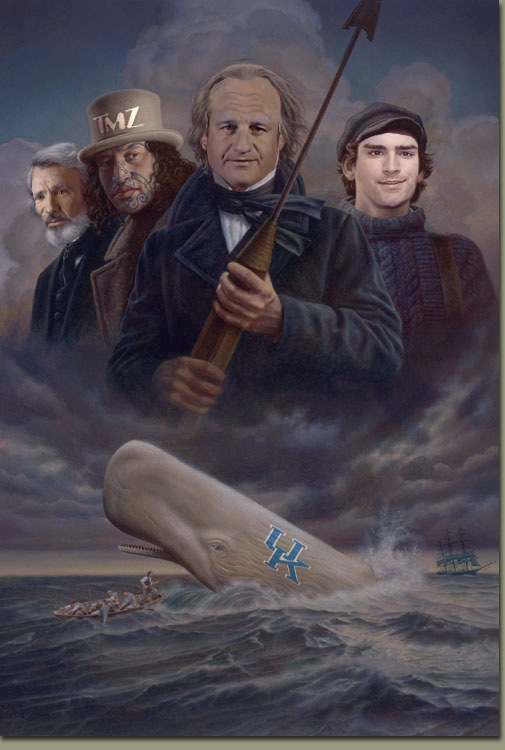 |
![]()
| Postscript: It didn't take long for the N.C.A.A. to exercise its hypocrisy. In the Fall of 2011 they ruled that Alex Len, a 7'1" center from the Ukraine could be eligible to play for the University of Maryland after sitting out ten-games as a suspension. This despite Len being, according to at least one article a paid professional. According to the article: "Len played a total of 3 minutes and 6 seconds in parts of two games under a professional contract in Europe, and unlike Kanter who earned ten's of thousands of dollars in compensation, Len earned approximately $800." (by Adam Chasen UMD 7'1" Freshman Center Could Find Out Eligibility Tuesday Home Game Sports October 25, 2011.
In Kanter's case, the N.C.A.A. did not find him ineligible for being a professional and did not find Kanter was under contract (despite Pete Thamel's continued claims). Instead the N.C.A.A. found Kanter ineligible for receiving more than the allowed expenses, which is the second consideration after the question of professionalism was answered as part of the N.C.A.A.'s eligibility process. Frankly, the Len case should never have even gotten past the initial stage-gate looking at professionalism (again if what is claimed in the article is true), much less arrive at a decision that he should be allowed to play. JPS Note: Although personally I would hope that the N.C.A.A. would allow such a situation where a player like Len could repay this minimal amount and retain his eligiblity. But comparing this case with Kanter's does bring to light that the N.C.A.A. only enforces its rules when it wants to, and ignores them at other times. |
![]()
Written by
Return to Kentucky Wildcat Basketball Page.